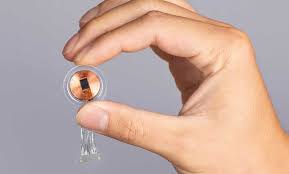Life hasn’t been the same for Noland Arbaugh since a 2016 swimming accident left him a quadriplegic, but Neuralink is hoping to restore some of that normality with a small brain-computer interface (BCI) allowing him to control a computer with his mind. Arbaugh, the first Neuralink recipient, graciously sat down with me for an interview, available now on our YouTube channel.
Implanted in January 2024 at Barrow Neurological Institute, the BCI allowed Arbaugh to regain digital autonomy. Its 1,024 electrodes in his motor cortex capture neural signals to control a computer, enabling gaming, scheduling, social media, and emails, with a recent shift toward productivity.
“I have a very specific purpose being in this study. I just wanted to help people.”
The technology is innocuous and easy to use. It charges via a small coil embedded in a hat, which plugs into a standard outlet.
“I’m charging right now. There’s a black cord in my hat. This hat right here has a heat-treated pocket, there’s a little coil that sits in the hat and it’s just over the implant and it’s connected to a little charger base down here.”
The implant’s physical presence is minimal, felt only if his head is bumped.
“If I lost my memory and woke up tomorrow and you told me I had a chip in my brain, I’d say you’re crazy because there’s no way for me to tell that it’s there.”
The surgery, under two hours via Neuralink’s robot “Tiny Dancer,” was faster than the expected three to six hours, with unprecedentedly low brain trauma.
“When the neurosurgeon looked at my brain after the surgery, he had never seen a brain less traumatized by a brain surgery.”
Arbaugh uses the implant 24/7, except during data collection tasks for Neuralink’s six-year study, which he’ll continue for another four and a half years. These tasks, from one to 40 minutes, occur daily, weekly, or biweekly, briefly interrupting control.
Arbaugh tested the implant’s limits with a 72-hour streaming marathon in November 2024, after 13- and 48-hour gaming sessions, hitting a memory limit but resolving it with Neuralink’s help, a unique story absent from Big Technology.
“Around hour 68-ish, I got a little delirious. Towards the end, hour 70, 71, I remember sitting the stream just thinking, Is this a dream? This is not happening, right?”
Chess, played pre-Neuralink with a mouth stick, remains his passion.
“It’s one of my favorite things in the world. I really, really enjoy chess, and so that’s probably my guilty pleasure at this point.”
In 2024, Chess.com invited him to Paris to make the ceremonial first move at the Speed Chess Championships, a trip not widely reported, showing Neuralink’s role in restoring global engagement.
“I got to meet some of the grandmasters. I got to hang out with a bunch of chess people and I got my butt kicked in some games of chess. But it was absolutely one of the best experiences ever.”
Neuralink isn’t the only accessibility device Arbaugh uses; he relies on speech-to-text regularly and wishes for improvements in this area.
“Siri is the bane of my existence. She refuses to get what I say correctly.”
Before Neuralink, Arbaugh used a mouth stick to tap touchscreens and tools like Dragon, which, despite decades of development, remain flawed.
“How is this not the best thing in the world at this point? It doesn’t seem like it would be that complicated,” echoing an emotion felt by many, including myself.
Neuralink attempted to solve the problem of typing in a few ways, first through imagined sign language, then by imagined writing, reached 25 words per minute with 80-90% accuracy, but this is well below a useful rate, something they are actively working to improve.
And current speech to text tools also fall short for anything other than short texts.
“Dictation just isn’t the same. The way that you say something is different than the way you would write it.”
Arbaugh’s plans have evolved since the implant. Originally studying international studies and French at Texas A&M with law school ambitions, he now seeks a new path, inspired by his trial role, potentially in neuroscience.
“How many people can go to school and say that they might be in a textbook somewhere? I think that’s where my passion is now.”
As far as Neuralinks future Arbaugh envisions able-bodied people using Neuralink to controll Bluetooth devices like Tesla’s Optimus robots or exoskeletons, in addition to aiding those with spinal cord injuries or ALS.
It’s possible that Arbaugh would receive an opportunity to participate in future studies for spinal cord injury, possibly returning mobility. Short of that?
“I would absolutely love to be involved with any of it. I’d love an Ironman suit.”
Study rules limit his ability to participate in exoskeleton trials at this time, but he’s open to offers.
As of June 2025, Neuralink has implanted at least three others in its trial, with plans to expand. The technology aims to restore movement, vision, and memory, potentially becoming as intuitive as smartphones, transforming lives for those with disabilities and paving the way for broader applications, from enhanced productivity to seamless device control.
You can watch the full length video here:


